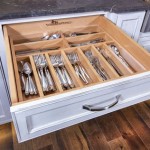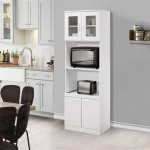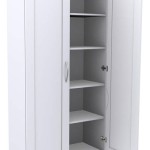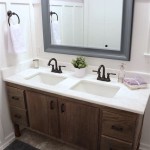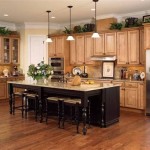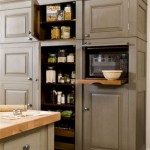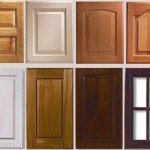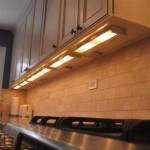Do You Have To Prime Cabinets Before Painting Them? A Comprehensive Guide
The question of whether or not to prime cabinets before painting them is a recurring one for both novice and experienced DIYers. The answer, while often perceived as simple, is nuanced and depends on a variety of factors. Skipping the priming step can sometimes lead to unsatisfactory results, requiring more work and expense in the long run. Conversely, in certain situations, priming may be unnecessary, saving time and materials. This article explores the importance of priming cabinets, the situations where it’s essential, and scenarios where it might be bypassed.
Priming, at its core, serves as a preparatory step that bridges the gap between the existing surface and the new coat of paint. It enhances adhesion, promotes uniform color distribution, and provides a barrier against potential staining or bleed-through from the underlying material. Understanding the specific functions of primer and how they relate to cabinet painting is crucial for making an informed decision about whether or not to include it in the project.
The Key Functions of Primer in Cabinet Painting
Primer plays several vital roles in achieving a professional and lasting paint job on cabinets. These functions address common issues encountered when painting directly onto various cabinet materials.
Adhesion Promotion: One of the primary functions of primer is to create a surface that paint can effectively adhere to. Cabinets, particularly those with a glossy or slick finish, often present a challenging surface for paint to grip. Primer acts as an intermediary layer, binding to the existing finish and providing a textured surface that paint can readily bond with. Without primer, paint may peel, chip, or scratch easily, undermining the durability of the paint job.
Sealing and Stain Blocking: Cabinets, especially older ones, may have stains from grease, water damage, or previous finishes. These stains can bleed through the new coat of paint, resulting in discoloration and an uneven appearance. Primer effectively seals the surface, preventing these stains from migrating into the fresh paint layer. Certain primers are specifically formulated for stain blocking and are particularly effective at preventing tannin bleed-through from wood cabinets.
Uniform Surface Creation: Cabinets may have variations in texture, color, or porosity. For example, repaired areas may differ from the surrounding surface, or the grain of the wood may be more pronounced in certain areas. Primer helps to create a uniform surface, minimizing these discrepancies and ensuring that the paint color is consistent across the entire cabinet. This results in a more professional and aesthetically pleasing finish.
Providing a Foundation for Topcoat Color: The color of the existing cabinet finish can influence the final color of the new paint, especially when using lighter paint colors. Primer provides a neutral base that prevents the underlying color from affecting the topcoat. This is particularly important when painting dark cabinets a lighter shade, as it reduces the number of coats of paint required to achieve the desired color saturation.
When Priming is Absolutely Necessary
In many situations, priming cabinets before painting is not optional but rather a critical step for ensuring a successful outcome. This is particularly true when dealing with certain cabinet materials, conditions, and desired finishes.
Painting Over Laminate or Melamine: Laminate and melamine cabinets have a smooth, non-porous surface that paint struggles to adhere to. These materials are designed to be water-resistant and durable, making them inherently resistant to paint bonding. A specialized bonding primer designed for slick surfaces is essential for painting laminate or melamine cabinets. Without it, the paint is likely to peel or scratch off easily, rendering the entire project a failure.
Painting Over Oil-Based Paint or Varnish: Applying latex paint directly over oil-based paint or varnish can lead to compatibility issues and poor adhesion. Oil-based and latex paints have different chemical compositions, and they do not always bond well together. An oil-based primer or a bonding primer formulated for use over oil-based finishes is necessary to create a stable base for the latex topcoat. This prevents the paint from peeling, cracking, or blistering over time.
Painting Bare Wood Cabinets: Bare wood is porous and absorbs paint unevenly. This can result in a blotchy and inconsistent finish. Primer seals the wood, reduces its absorbency, and creates a uniform surface for the paint to adhere to. Additionally, certain types of wood, such as oak and mahogany, contain tannins that can bleed through the paint and cause discoloration. A stain-blocking primer is essential to prevent this from occurring.
Addressing Stains or Damage: Cabinets with existing stains from grease, water damage, or mildew require thorough priming to prevent these stains from bleeding through the new paint. Similarly, if the cabinets have been repaired with wood filler or patching compound, the primed surface will ensure that the repaired areas blend seamlessly with the surrounding surface. A stain-blocking or all-purpose primer can be used, depending on the severity of the stains.
Significant Color Change: When painting dark cabinets a significantly lighter color, primer is essential to block the underlying color from showing through. Dark colors can bleed through lighter paint, requiring multiple coats to achieve full coverage. Primer provides a neutral base, reducing the number of coats of paint needed and saving time and materials.
Situations Where Priming May Not Be Necessary
While priming is generally recommended for cabinet painting, there are certain situations where it may not be strictly necessary. These scenarios typically involve cabinets in good condition with compatible finishes and minimal need for stain blocking or adhesion enhancement.
Cabinets in Excellent Condition with Existing Latex Paint: If the cabinets are already painted with latex paint, are in good condition (no chipping, peeling, or damage), and the new paint is similar in color, priming may not be required. However, it is still advisable to lightly sand the existing finish to create a slightly textured surface for better adhesion. A thorough cleaning to remove any dirt, grease, or grime is also essential. It is often prudent to test a small, inconspicuous area to ensure proper adhesion before committing to the entire project.
Using Self-Priming Paint: Some paints are formulated with built-in primer, eliminating the need for a separate priming step. These paints are designed to adhere well to a variety of surfaces and provide good coverage. Self-priming paints can be a convenient option for cabinets that are already painted and in good condition. However, it is important to carefully read the manufacturer's instructions and ensure that the paint is suitable for the specific cabinet material and existing finish. For demanding situations, such as painting over oil-based paint or bare wood, a separate primer may still be recommended, even when using self-priming paint.
Light Color Change on Already Painted Cabinets: If the cabinets are already painted and the new paint color is only slightly different, priming may not be necessary, provided the existing paint is in good condition and adheres well. However, it's recommended lightly sanding the cabinets to provide a better surface for the paint to grip. Choosing a high-quality paint with good hiding power can minimize the number of coats needed to achieve full coverage. As with other situations where priming is considered optional, testing a small area is recommended to ensure proper adhesion and color coverage.
Ultimately, the decision of whether or not to prime cabinets before painting depends on a careful assessment of the cabinet material, existing finish, condition, and desired outcome. While skipping the priming step may seem like a time-saving measure, it can often lead to problems down the road, requiring more work and expense to correct. When in doubt, it is generally best to err on the side of caution and prime the cabinets to ensure a professional and long-lasting finish.

How To Prime Cabinets For A Smooth Finish The Turquoise Home

Tips Tricks For Painting Oak Cabinets Evolution Of Style

How To Paint Kitchen Cabinets A Step By Guide Confessions Of Serial Do It Yourselfer

How To Paint Kitchen Cabinets A Step By Guide Confessions Of Serial Do It Yourselfer

How To Prime Cabinets For A Smooth Finish The Turquoise Home

What You Need To Know Before Painting Cabinets The Palette Muse

How To Paint Kitchen Cabinets A Step By Guide Confessions Of Serial Do It Yourselfer

Refinish Kitchen Cabinets With Kilz Restoration Primer

How To Prime Cabinets For A Smooth Finish The Turquoise Home

Painting Kitchen Cabinets Without Primer
Related Posts

